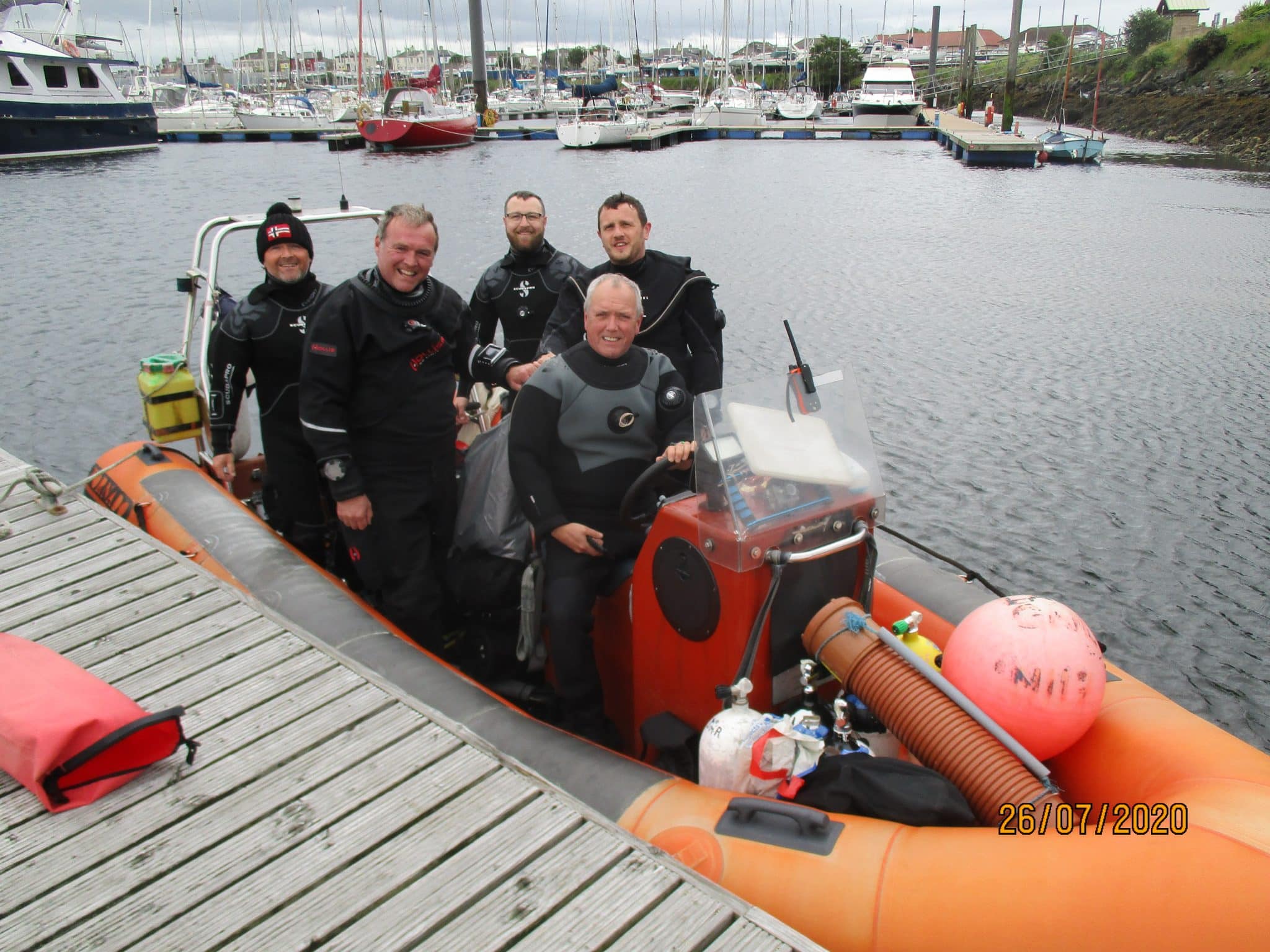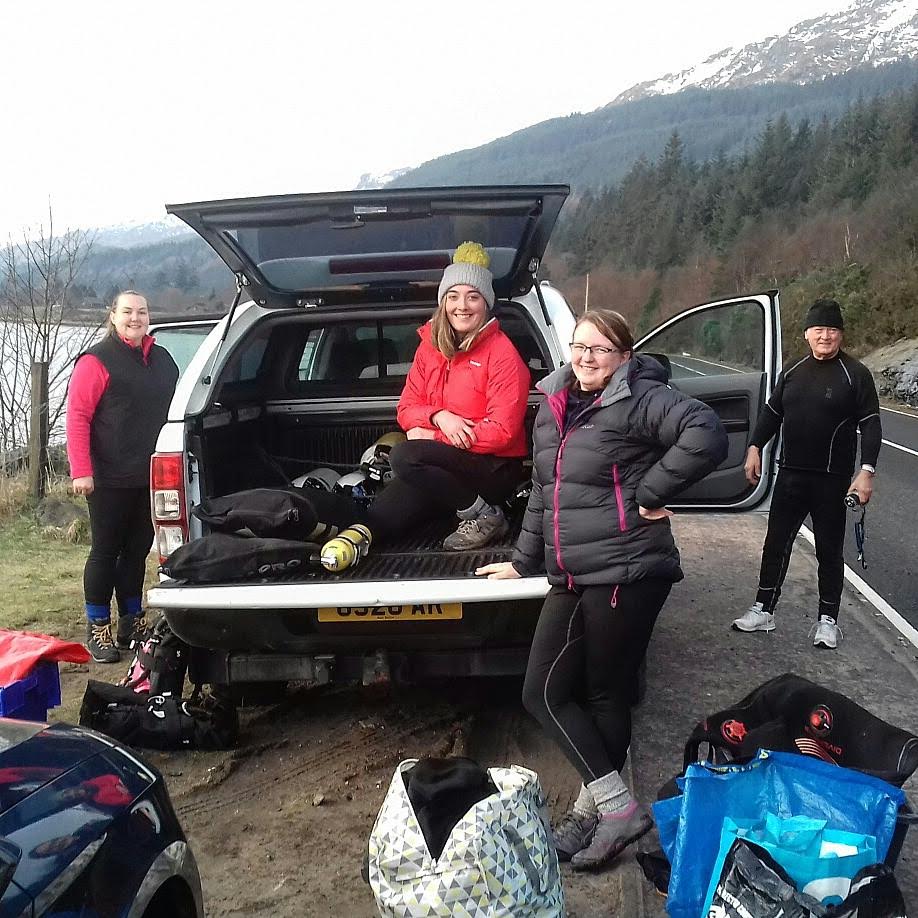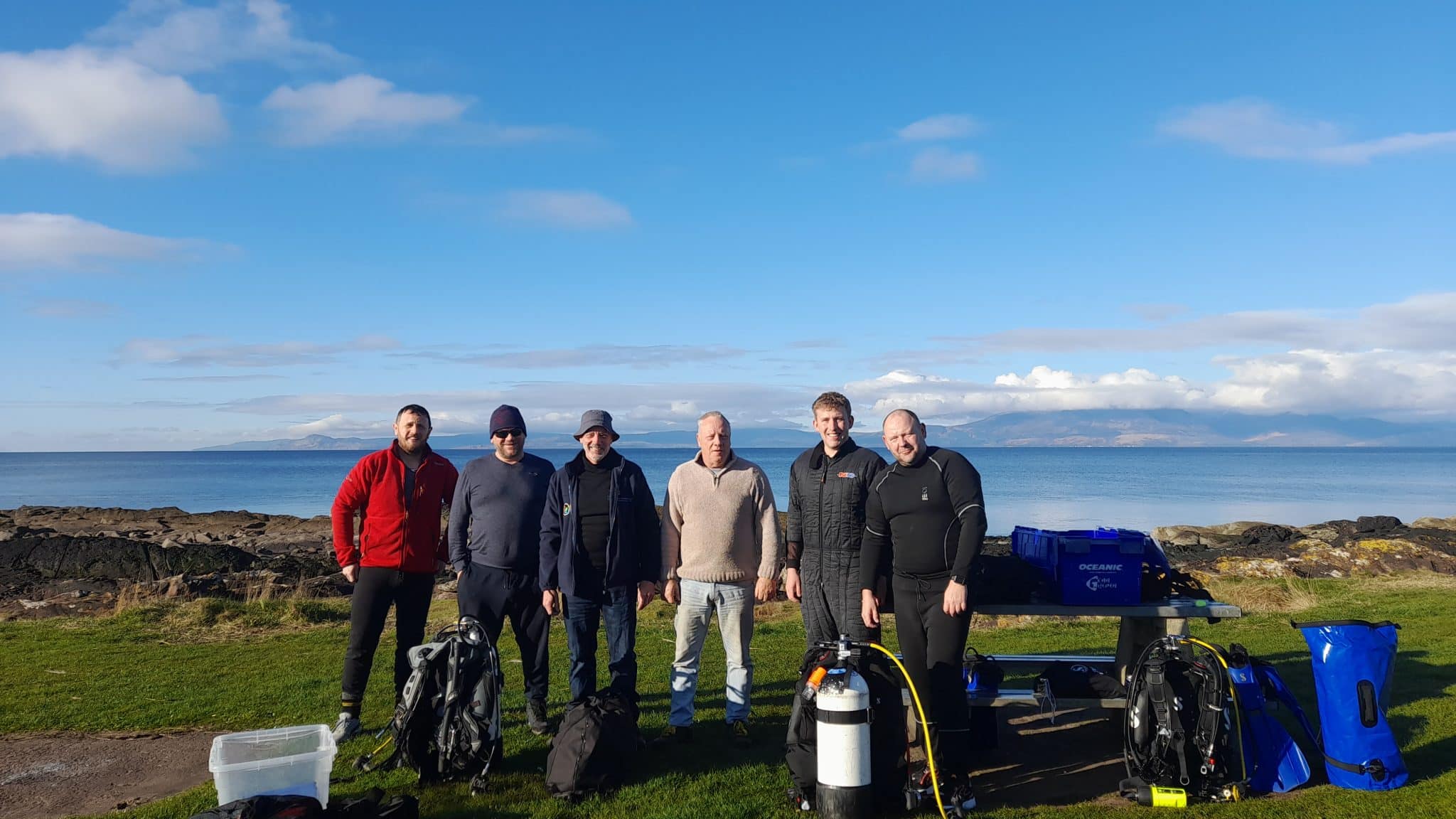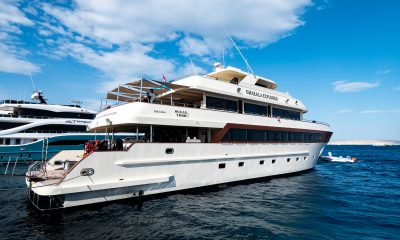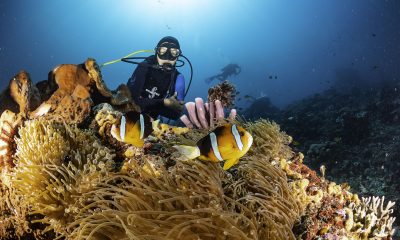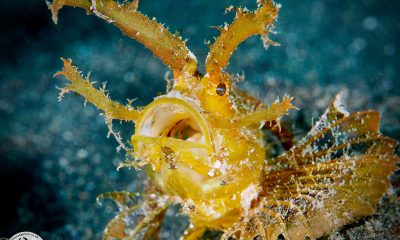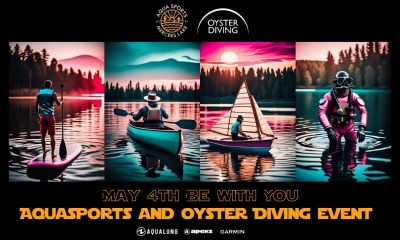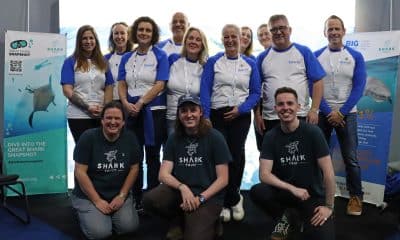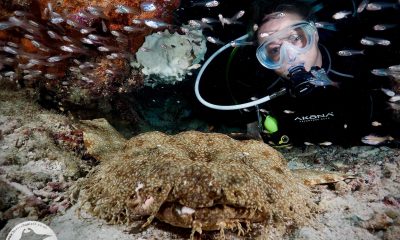News
Meet Our Club: Kilmarnock Sub Aqua Club (KSAC)
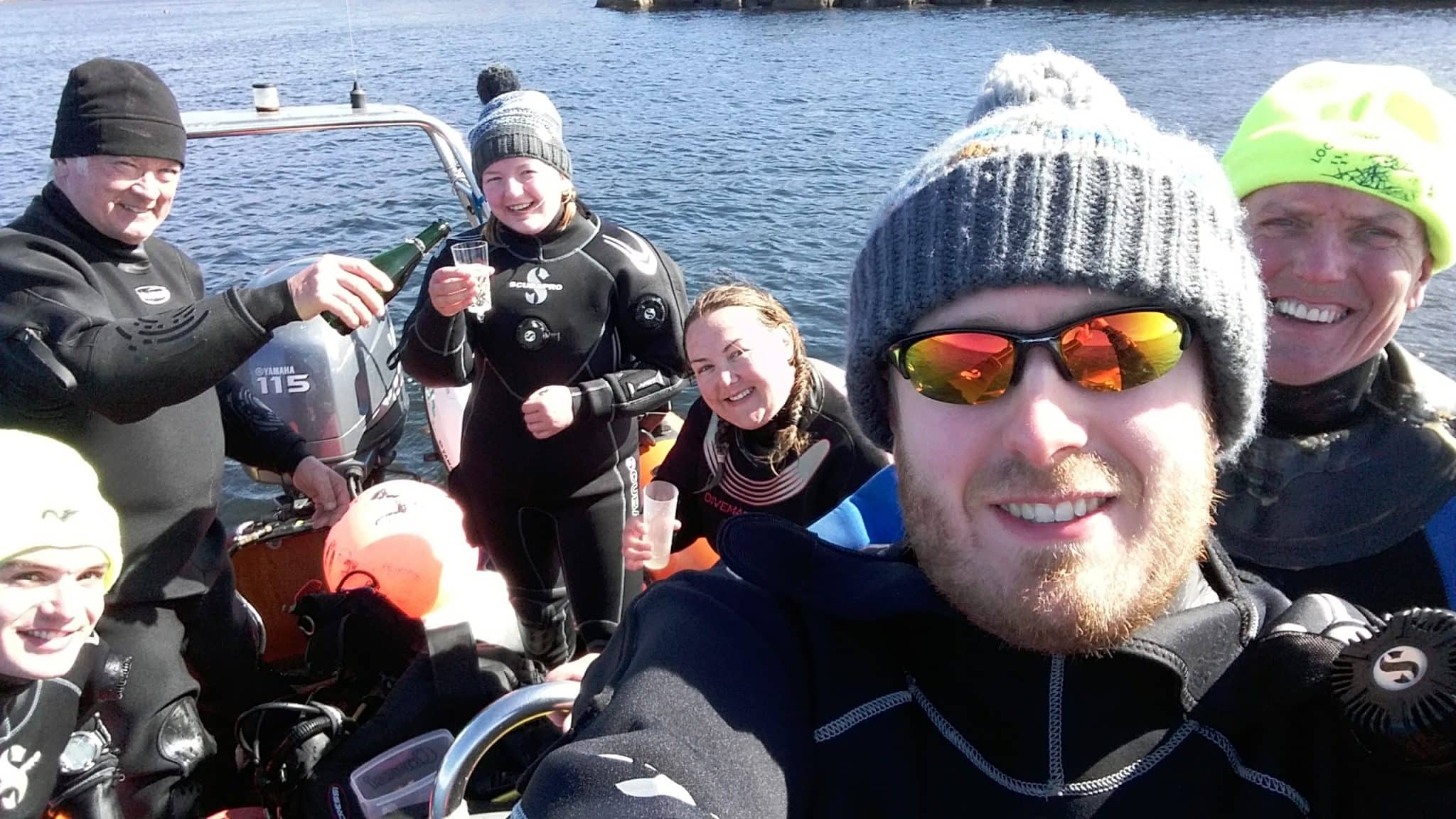
Want to join a dive club? In this series, we take a look at grassroots diving and find out what’s happening on the club scene in the UK and around the world…
What is the name of your club?
Kilmarnock Sub Aqua Club (KSAC)
Where is your club based?
Kilmarnock in East Ayrshire, but we dive mainly in the west coast sea lochs of Loch Long and Loch Fyne as well as in the Clyde using our club boat based at Largs Yacht Haven.
Club affiliations (i.e. BSAC, PADI, SAA, etc.)
Scottish Sub Aqua Club (ScotSAC)
Where and when do you meet?
Every Monday night at the Galleon Leisure Centre in Kilmarnock from 20:00 to 22:00.
How do you respond to the challenge of recruiting new members?
We’ve made a really effort over the past few years to improve our social media presence using Facebook and Instagram. We’ve used it to show pictures of our dive days as well as photos of the marine life taken by club members during our dives. This has proven to be a big hit and seen our numbers increased over time.
On top of all that we have all the kit a new diver needs (minus dry suits), so no rental or hefty purchases are needed to get started.
What facilities and resources does the club use/have?
We’re really luck in the club to have a great relationship with the Galleon Leisure Centre where we have access to storage, allowing us to have several sets of club kit (except dry suits) new members can use, as well as a full 4 whip compressor meaning we can provide our own air fills. To compliment our “big” compressor, we also have a mobile one as well which means we can take it away on longer trips where access to air fills might be limited allowing us to explore areas that might not be as well “supplied”.
As well as that we also have our own club boat that is kept at Largs Yacht Haven that allows us easy access to some of the incredible diving found in the Clyde.
What sort of diving do you do, and where?
Most of our shore diving is done in and around the sea lochs of Loch Long and Loch Fyne. These dives offer a range of adventures from trainee friendly shallow reef dives, to deeper more challenging dives.
With the club boat we also do a lot of our diving off the west coast of Scotland in the Clyde. This gives us access to some incredible wall dives, wreck dives and again nicer shallower scenic dives for trainees.
Do you organise any club trips abroad, and if so, where?
Over the years we have organised various club trips from Gozo/Malta to our most recent trip to Egypt. Its an opportunity for club members to experience incredible dives we might not normally do with people we know.
On top of that we regularly organise “weekend” trips here in Scotland to places like Lochaline or Kinlochbervie. They might not be as exotic as Egypt, but the trips are always thoroughly enjoyed and gives club members a chance to experience new dives here at home.
We regularly arrange day trips too to places like St Abbs, Eyemouth and the Farnes Islands which are always a hit with club members.
Does your club have any special interests such as conservation, special projects, etc?
We’ve been involved in the “Save Our Seas” project over the years.
One of our club members Lauren who was studying for her marine biology degree carried out a survey of some of our local dives sites, looking into diver impact on the seabed.
As well as this another of members Ross has worked with BBC Scotland as part of their social media platform, BBC the Social, to write, record and produce several short videos about diving here in Scotland and some of the environmental impact felt by our seas. These have included looking at the effect of dredging, impact of marine protected areas on Arran, blue carbon and plastic pollution.
Several members are also qualified Seasearch Observers reporting on sea bed and marine life conditions in our area.
Does your club have any claims to fame or any particularly interesting stories… or members?
One of our members Ross has worked with BBC Scotland as part of their social media platform, BBC the Social, to write, record and produce eleven short videos about diving here in Scotland. These have included looking at the effect of dredging, impact of marine protected areas on Arran, blue carbon and plastic pollution. As well as, this he has also covered general topics around diving and some of our forgotten history surrounding the various wrecks that can be found off our coastline.
What are the club’s plans for the future?
At the moment our main aim is to continue diving, having fun and introducing as many new people to our underwater world as we possibly can.
Where can people find out more about your club?
Facebook: www.facebook.com/kilmarnocksubaquaclub/
Finally… if you could sum up your club in just one sentence, what would it be?
KSAC is a friendly, welcoming club, with a wealth of diving experience who have one thing in common… their shared love of the Sea, Marine Life, and Adventure.
News
Dive Worldwide Announces Bite-Back as its Charity of the Year

Over the next 12 months, specialist scuba holiday company Dive Worldwide will be supporting Bite-Back Shark & Marine Conservation with donations collected from client bookings to any one of its stunning dive destinations around the world. The independently-owned operator expects to raise £3000 for the UK charity.
Manager at Dive Worldwide, Phil North, said: “We’re especially excited to work with Bite-Back and support its intelligent, creative and results-driven campaigns to end the UK trade in shark products and prompt a change in attitudes to the ocean’s most maligned inhabitant.”
Bite-Back is running campaigns to hold the media to account on the way it reports shark news along with a brand new nationwide education programme. Last year the charity was credited for spearheading a UK ban on the import and export of shark fins.
Campaign director at Bite-Back, Graham Buckingham, said: “We’re enormously grateful to Dive Worldwide for choosing to support Bite-Back. The company’s commitment to conservation helps set it apart from other tour operators and we’re certain its clients admire and respect that policy. For us, the affiliation is huge and helps us look to the future with confidence we can deliver against key conservation programmes.”
To launch the fundraising initiative, Phil North presented Graham Buckingham with a cheque for £1,000.
Visit Dive Worldwide to discover its diverse range of international scuba adventures and visit Bite-Back to learn more about the charity’s campaigns.
MORE INFORMATION
Call Graham Buckingham on 07810 454 266 or email graham@bite-back.com
Gear News
Scubapro Free Octopus Promotion 2024
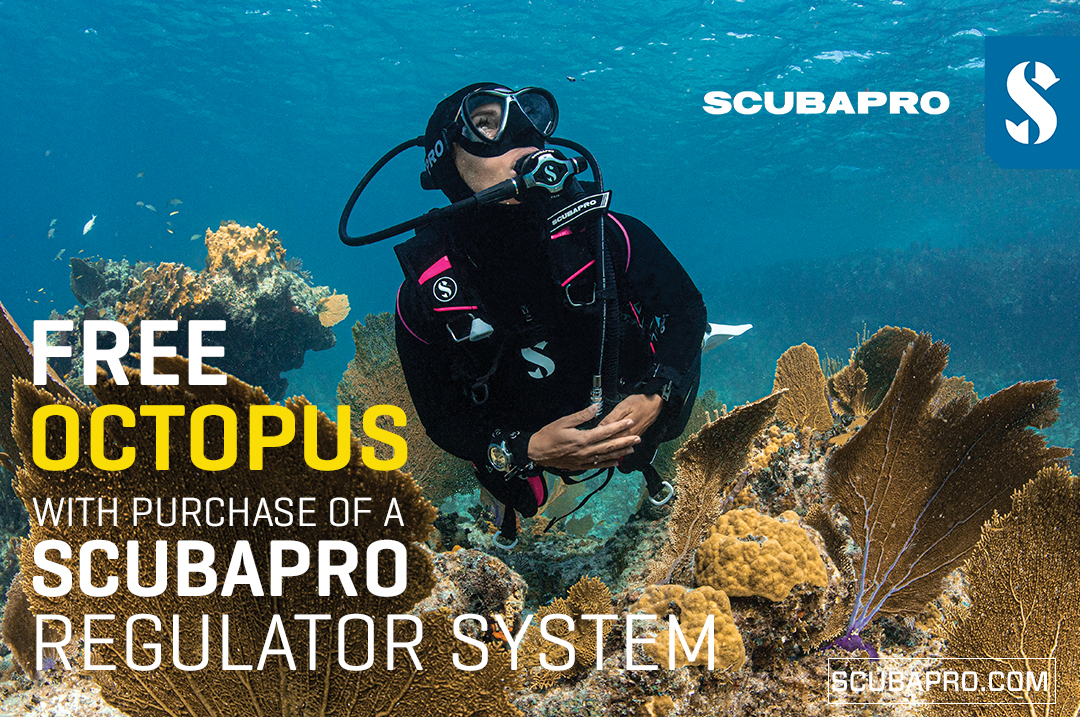
Free Octopus with every purchase of a SCUBAPRO regulator system
Just in time for the spring season, divers can save money with the FREE OCTOPUS SPRING PROMOTION! Until July 31st SCUBAPRO offers an Octopus for free
with every purchase of a regulator system!
Get a free S270 OCTOPUS with purchase of these combinations:
MK25 EVO or MK19 EVO with A700
MK25 EVO or MK19 EVO with S620Ti
MK25 EVO or MK19 EVO with D420
MK25 EVO Din mit S620Ti-X
Get a free R105 OCTOPUS with purchase of the following combinations:
MK25 EVO or MK19 EVO with G260
MK25 EVO or MK17 EVO with S600
SCUBAPRO offers a 30-year first owner warranty on all regulators, with a revision period of two years or 100 dives. All SCUBAPRO regulators are of course certified according to the new European test standard EN250-2014.
Available at participating SCUBAPRO dealers. Promotion may not be available in all regions. Find an authorized SCUBAPRO Dealer at scubapro.com.
More information available on www.scubapro.com.
-
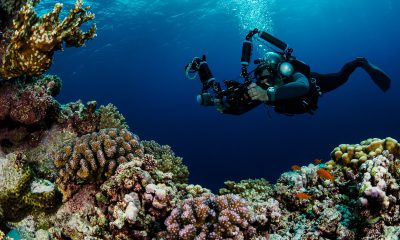
 News3 months ago
News3 months agoHone your underwater photography skills with Alphamarine Photography at Red Sea Diving Safari in March
-
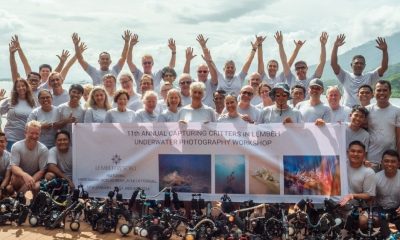
 News3 months ago
News3 months agoCapturing Critters in Lembeh Underwater Photography Workshop 2024: Event Roundup
-
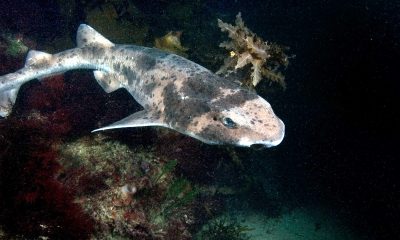
 Marine Life & Conservation Blogs3 months ago
Marine Life & Conservation Blogs3 months agoCreature Feature: Swell Sharks
-

 Blogs2 months ago
Blogs2 months agoMurex Resorts: Passport to Paradise!
-
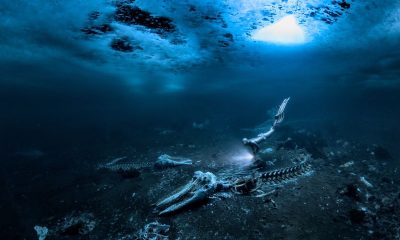
 Blogs2 months ago
Blogs2 months agoDiver Discovering Whale Skeletons Beneath Ice Judged World’s Best Underwater Photograph
-
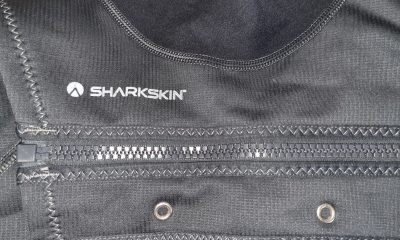
 Gear Reviews2 weeks ago
Gear Reviews2 weeks agoGEAR REVIEW – Revolutionising Diving Comfort: The Sharkskin T2 Chillproof Suit
-
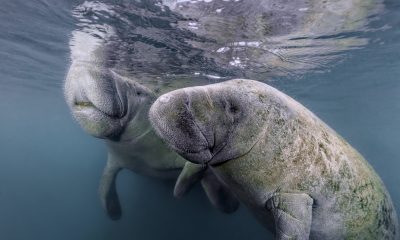
 Marine Life & Conservation2 months ago
Marine Life & Conservation2 months agoSave the Manatee Club launches brand new webcams at Silver Springs State Park, Florida
-
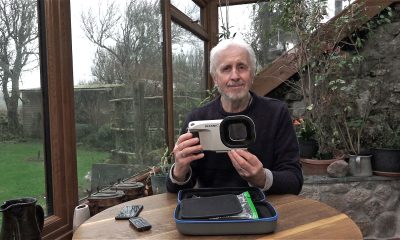
 Gear Reviews3 months ago
Gear Reviews3 months agoGear Review: Oceanic+ Dive Housing for iPhone


